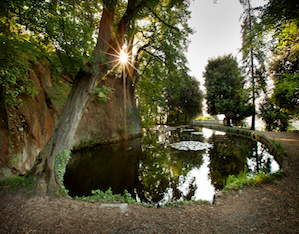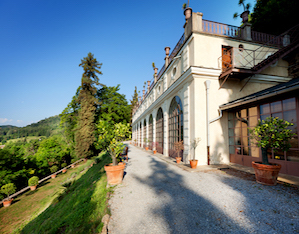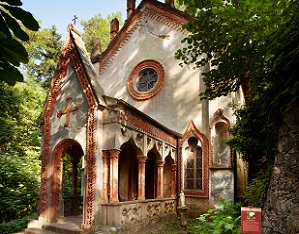Hidden among thick, shadowy woodland, here you will find “fountains, waterfalls, groves, vegetable gardens, marble terraces, diminutive gothic temples, and superbly-furnished rooms; in short, everything that luxury can accommodate and art skilfully arrange.”
This is how, in 1853, Father Giuseppe Cereseto described the Castle of Roccolo when he visited with nineteen students from the Collegio Nazionale of Genoa. He remarked on how such a small space could “gather together the finest and most exquisite different parts that nature and art can provide.” Built by Marquis Roberto Tapparelli d’Azeglio – brother of famous statesman Massimo – and his wife Costanza Alfieri di Sostegno between 1831 and 1862, the manor house is immersed in lush hills on the western fringes of the Piedmont plain. Its architectural design is one of the most significant examples of medieval revival, combining a neo-gothic style with Moorish and Orientalist accents to cater to the marquises’ historicist and Anglophile tastes. Illustrious visitors included Silvio Pellico, Cavour, King Umberto I and Queen Margherita, as well as British Prime Ministers Lord Palmerston and Lord Gladstone. The fifty-hectare landscaped park behind the castle is only apparently spontaneous; in actual fact, it combines exotic (American sequoia, liriodendron, horse chestnut, osmanthus and laurel) and native (maple, linden, holm oak and yew) species. Xavier Kurten contributed to the initial design, although it was subsequently modified by others. The complex is arranged along a central avenue that is formerly defined by an evocative series of water features fed by a spring (no longer active). Classical greenhouses built between 1846 and 1850 bookend a series of panoramic terraces heralded and guarded by two stone lions.




